You know those things that we intend to do, but don’t often get around to doing? Those tasks that slowly eat away at both our sanity and patience until we finally reach a point where we say “no more”? If you don’t know what I mean, see the following video:
httpv://www.youtube.com/watch?v=E9tRGMBGzNs
Recently, on a return trip from the Blue Mountains to visit my sister, a friend of her’s mentioned that he had just built “one of those IKEA Pedalboards”. I was intrigued. We discussed some of the basics and I spent the rest of the day scouring forums and doing some research on it.
Here are some of the great resources that I came across in my research:
* Harmony Central – Official IKEA/GORM Pedalboard Appreciati
* The Gear Page – My IKEA Gorm Pedalboard Build Thread
* End of the Game – DIY Effects Pedalboard
For a long, long time I’ve wanted to get my pedalboard situation sorted. I’ve got some nice gear, but the board itself has always been the weakest link. I currently have the CnB Pedalboard/Case:

It isn’t entirely bad. It can be done up with a lid which has a handle and acts as a sort of flight case. The exterior is also sturdy enough for most forms of transport… I would be dubious about putting it on a plane though.
The main shortfalls with this board are:
- The sides of the base have a lip, so unless you are using a lead with a right-angled plug on the input and output of the board, space is wasted.
- The board says it will fit 8 pedals, which is fine – if you only use the one standard size pedal in addition to right angled plugs on your leads (see above). Unless mounted on some woodblock or something, I’d say the board fits a max of 5 pedals.
- In an effort to allow players to velcro their pedals straight to the board, the base is lined with this carpet-sort of material. It is thin and nasty and no pedal will stick to it – ever. Good thought, bad execution.
- Since the board is basically just a flat box, there is no room to fit a power-brick and nowhere to hide your cables and wiring. When the pedals are in and (unsecurely) placed, it looks bad.
- Aesthetics are important. (see above).
A couple of months ago, I had considered getting a Pedal Train… but with a price-tag of around $300 for the one that I wanted, I just couldn’t justify it.
Enter, the IKEA Gorm Pedalboard.
What is it?
The board is based on the IKEA Gorm Shelves. They come in packs of two and can be purchased with either 3 slats or 5 slats:

- As a softwood material, the completed pedalboard will be cheap, light, and with proper support, strong.
- Due to the fact that the board comes in pack of two, there will also be plenty of extra wood to angle the board comfortably and brace any weak sections.
- Finally, the slatted design of the shelf is useful for tidying cables and hiding power, which makes the board good to go with very little effort.
Plan of Attack
Before we begin with the process, let me outline my intentions with my board.
Firstly, I decided to purchase the set of 5 slat shelves, with the plan to create 2 boards – A large one (4 slats) for my electric guitar setup, and a small one (3 slats) for my acoustic guitar setup. I want to make my board look as pro as possible which means sweet carry handles, a glossy colour finish, and all power and cable routing as out of site as possible. I want these boards to last me forever… Or at least until I’m motivated enough for another similar DIY project.
What I Used
- 2x Cans of Spray Paint – I picked green because it is a badass colour. If you are only making one board, 1x can will do fine.
- Velcro – This is a really important ingredient for this project and if skimped on, has the potential to create a whole heap of unnecessary frustration. I got 2x 5m rolls of loop and 1x 3m roll of industrial strength hook. Again, if only doing one board, 1x roll of 5m loop will be sufficient.
- Rubber Feet – 2x four packs should do the trick. Black is a good colour for this.
- 4x handles – Two for each of my boards. Different boards, different handles.
- Right-angle brackets – I only bought four but had two lying around. I used six, so you should get six.
- Sand Paper – You’ll need this to smooth out the wood for painting, and to strip back the paint for the Velcro adhesive.
- Cable-Ties – get a packet of medium to large ones
- Power board – get one with surge protection (most have it) and wider-spaced plugs. The wider spacing will be useful for those vintage pedals with large power-supplies. You’ll need two of these if you’re doing the extra board, obviously.
- A device that can power many of your pedals from a single source. I have the Artec SPB-8 Power Brick. Well regarded examples include:
- Saw – This is required to cut the wood.
- Cordless Drill – To make holes in the wood for screws cable-ties.
- 2x 77x51cm Gorm Shelves – Get the smaller one if you like. For me, the more wood to work with the better.
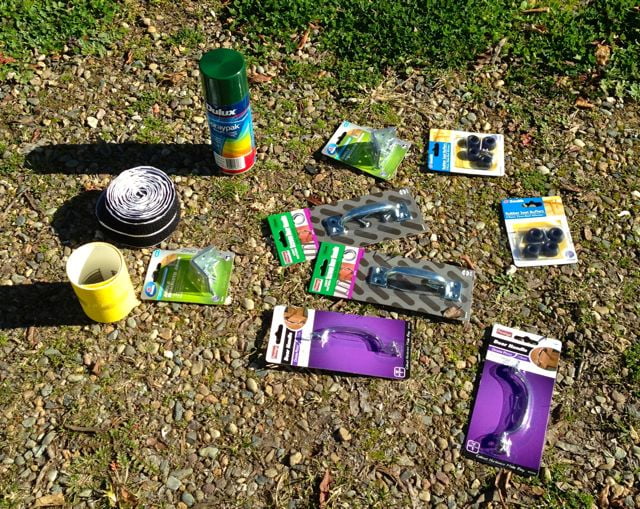
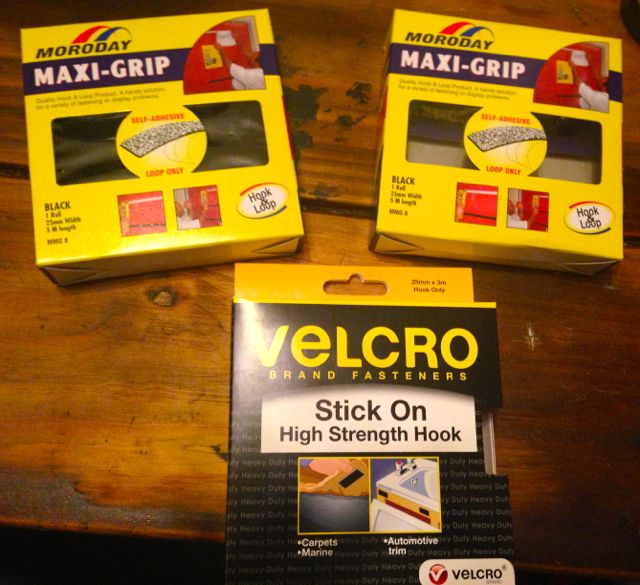
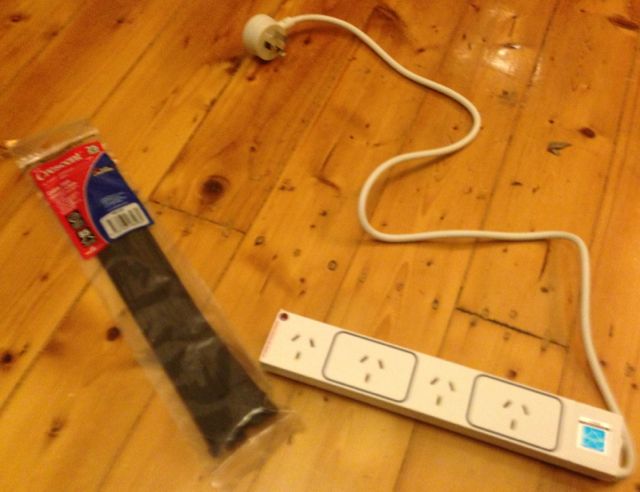
The Process
1. Cut your shelf according to how large you want your board. Since I’m making two, I cut one with 3 slats and one with 4. Keep the off-cuts.
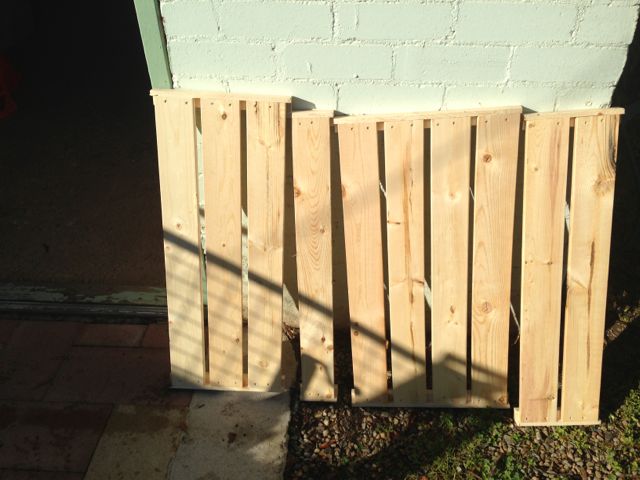
2. Cut the 2-slat board so that you now have 3 individual slats (with the end still attached). Two of these will be used to wedge the board up, the third will be cut in half and used as braces to strengthen the board.

3. Sand everything. The smoother you do it, the cleaner the end result will be. I used an electric sander – which kicked ass. In hindsight, I was a little lazy on this area so do it well.

4. Cut the single slat to size by firstly measuring it to the larger board and then the smaller. You should have the perfect amount. With a hammer, knock off the end pieces of this slat to give a bit extra in length.

5. Securely screw the brace to the board and sand it back further. Now we have strength!
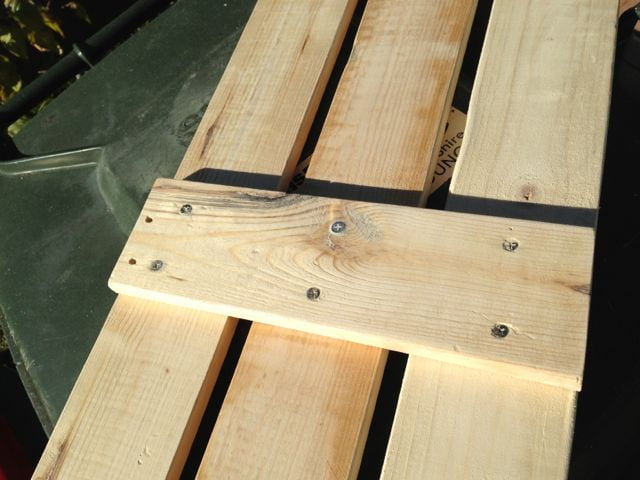
6. Now attach the right angle bracket to the single length slats. This will wedge our board up at a comfortable angle.


7. For better weight distribution and for the sake of the board’s back rubber feet, I decided to sand off the base a little. Necessary? Not sure. Seems to work though.
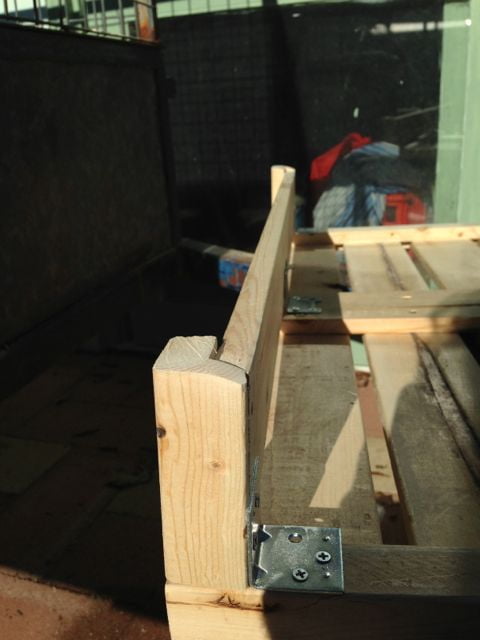
8. Time to paint! I decided to use spray paint because I figured that it would be cheaper ($10 per can) and it is touch dry within 20-30mins. One of my favourite colours is green, so I painted my boards that colour. You will need to do several layers to make it nice and glossy.
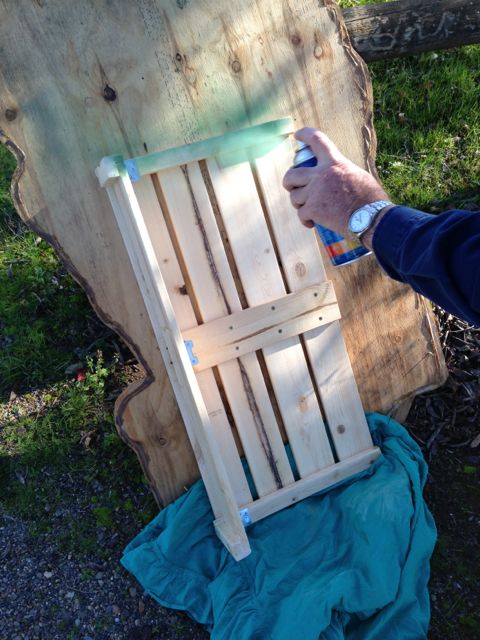
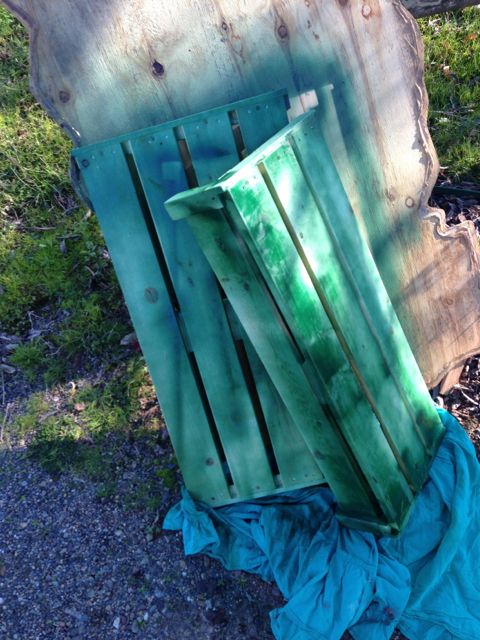
9. In between paint drying sessions, I decided to mutilate the base of my pedals – which is essential if you want the Velcro to stick properly. All pedals come with rubber underneath and for some, it covers the entire base. Peel this off with a flat-head screwdriver and attach the industrial-strength hook velcro.
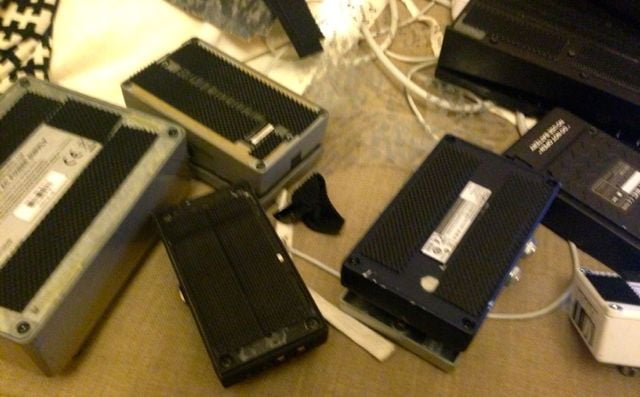
10. The multi-layers of paint have now dried and the board looks great. (It was a very sunny spot where I took this photo, so the white bits are reflections of light.)
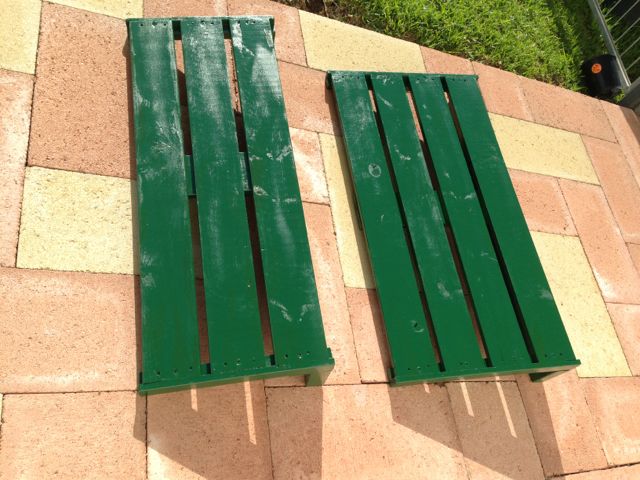
11. Time to add the handles… I didn’t screw mine on directly in the middle. I moved them up a bit to support the added weight from the wedge and from the power supply that will sit below.
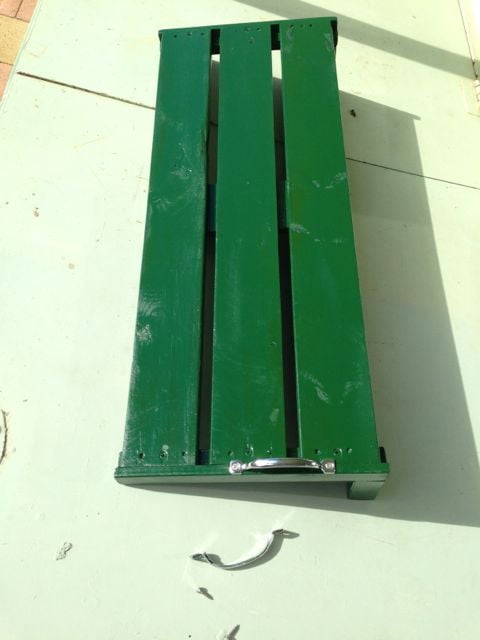
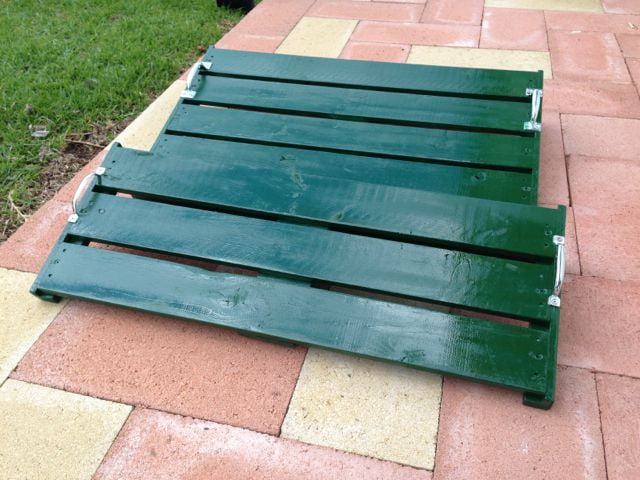
12. Apply your rubber feet. I’ve seen a few builds of this where they added upwards of eight but I only used four. Drill the back wedge end on a bit of an angle so it works with that extra sanding that you did.
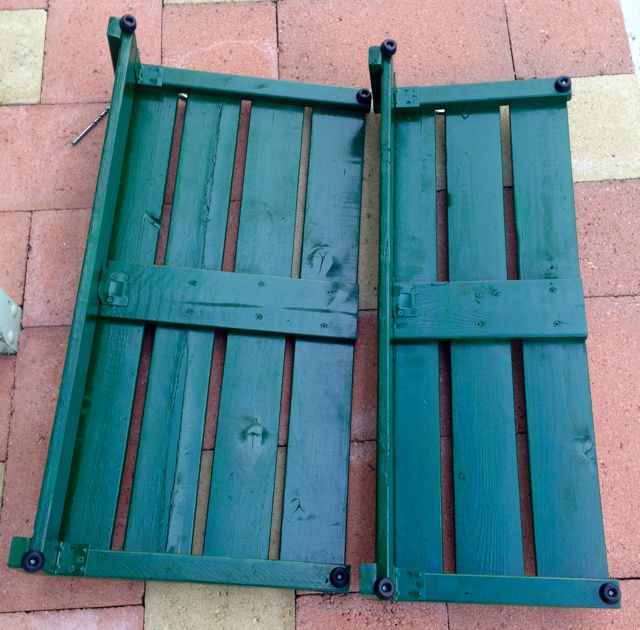
13. Sand back the sections of your panels where Velcro will sit. The adhesive will stick better to a matte surface.
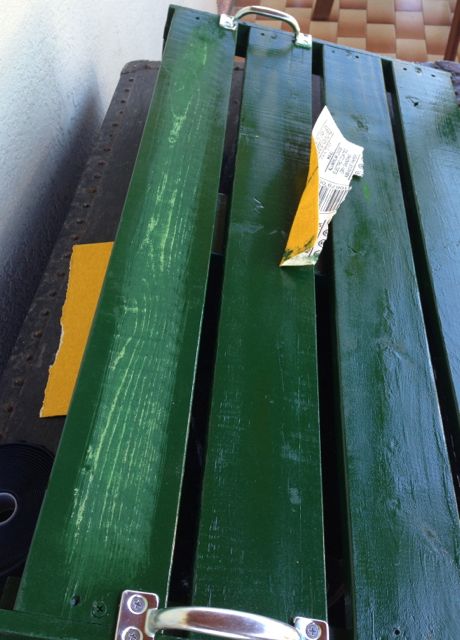
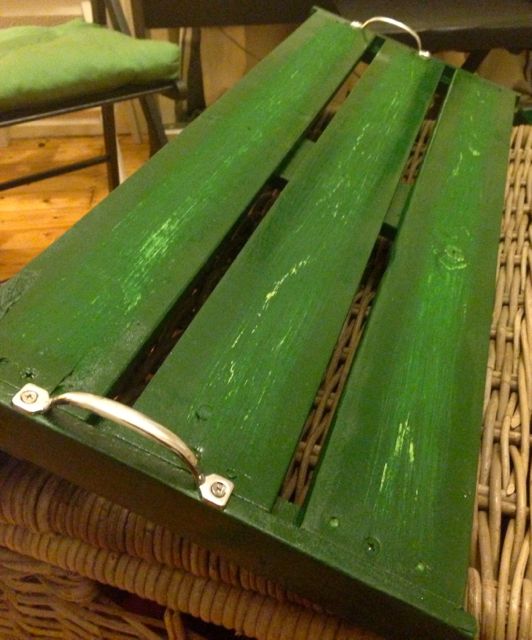
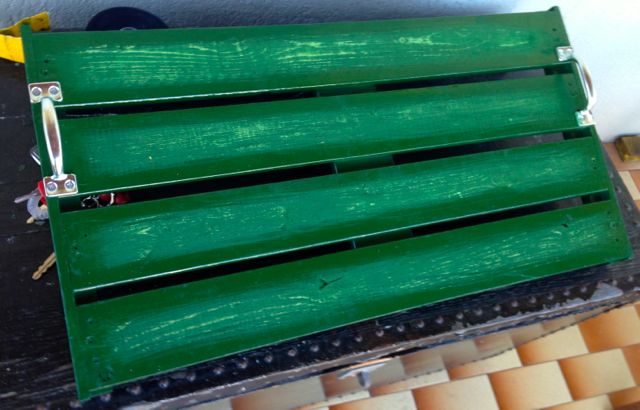
14. Run along two rows per panel of the loop Velcro roll. You will very quickly discover why we bought 10m.
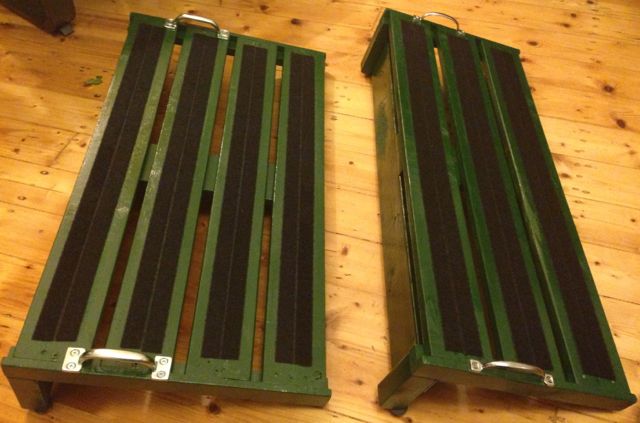
15. Attach power-board and power-supply by drilling any necessary holes to the back and using cable-ties.
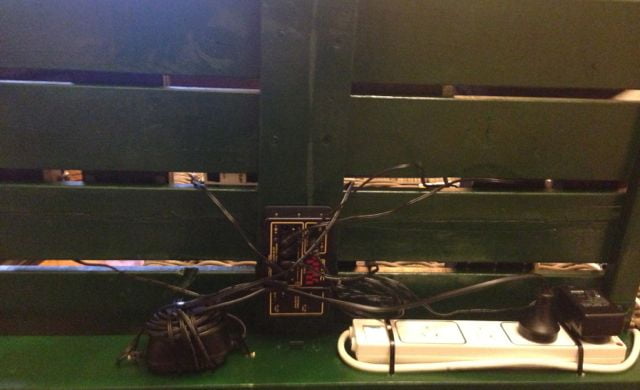
16. Figure out where you’re going to place your pedals and wire them up! FINISHED! (For more information on position of effects in the chain, click HERE. I’ll write up an article on this at some point in the future…)

Final Thoughts
The end product is sturdy and practical. I’ve still got a few more pedals on order/loan that I’ll need to add to the mix at some point soon which will be no issue as this board can more than handle it. This project was fun and beneficial. Highly recommended if you have the time and motivation!


Great board! The right angle brackets and center slab of wood is a good idea, I might have to add them to my board for my wah pedals sake!
Thanks mate! Loved your Gorm post as well. Gave me a great head start in planning out mine. End of the Game is a great blog!
Hi Sam, great board and great step by step explanation! I’m building my own one right now and I was wondering if the right angle brackets were the only things you used to attach the two pieces of wood, or did you use additional screws/glue? Greetings from the Netherlands. Martijn
Cheers Martijn!
I found that the brackets were more than enough to support the weight… Especially since I used one in the middle on the brace.
Sam
Thank you for the quick response and information!
Hey mate. I was just wondering if your bigger board fits in your pedal case.? I have the same case and would like to do something like this.
Hey Bailey, sorry about the extended wait for a reply. Unfortunately, no. If you’re talking about my old CNB case, the larger board doesn’t fit. This is the only problem with the board – all of the pedals are pretty exposed. But if you’re like me, I don’t mind my pedals getting beat up a bit… It adds character.
I’ll post something in the way of a case when I get around to building one. Wouldn’t be too hard, I imagine. Except for the whole ‘weight thing’.
-Sam
Alright, I know this is an old post BUT if you’re still with me: what did you think about the degree of elevation on your pedalboards? To me it seems like your board is raised up quite a bit, and I know that “standard” boards like pedal train only have like an 8-degree incline. Thoughts?
Sorry for the super delayed reply! You’re right, mine were raised up a bunch more than 8 degrees. You can lower this by sanding (or cutting) the GORM shelves a whole bunch more before you paint and assemble etc.
Personally, I prefer a bit more of an incline. Just make sure that you have rubber feet on the board or it might want to slide forward when you stomp down on a pedal.
I made mine from an aluminum ladder,,,from a camper….used a grinder with a cutting wheel..1/8 inch pop rivets…power source and all the wires and cables hid underneath..does really well..no bend or give or bend in any direction..
Great idea, I’m getting the parts together to do this. It looks like the Gorm shelves are called Hejne here in the UK, maybe that’s a local thing or IKEA changed the name.
Looking these up – very similar. I’m sure that it won’t be an issue to adjust this build. Here’s a YT link that I found –